How to Connect Your Wii to a Projector: A Step-by-Step Gaming Guide
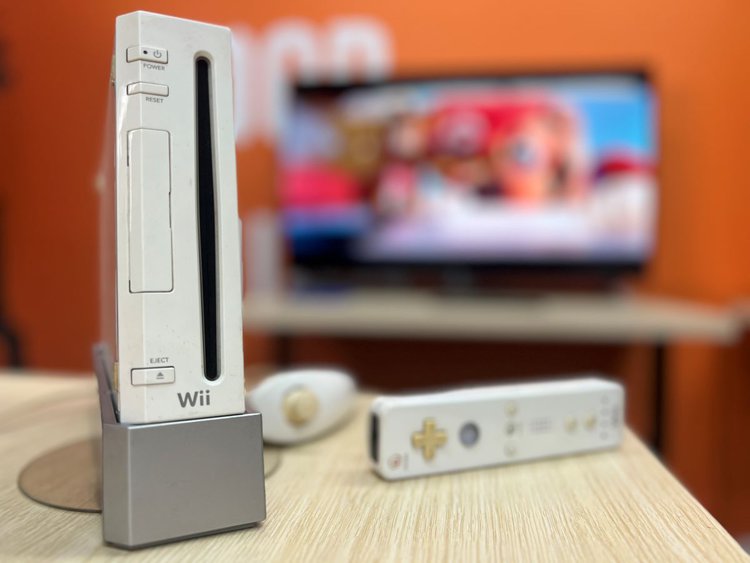
What To Know
- A Wii can be connected to a projector using an RCA to HDMI adapter or an RCA to VGA adapter.
- For the Wii’s sensor bar to work correctly, it should be placed in front of the projector screen and can be attached using tape or a wireless sensor bar can be used for easier placement.
This guide ensures you maximize your retro Wii setup by linking it effortlessly to a projector.
We’ll cover the essentials – from syncing the Wii Sensor Bar to managing the right connections for seamless gameplay.
Let’s get started and unlock the full potential of your gaming sessions.
Quick Navigation
Things You Need to Know About Wii?
The Wii is a popular gaming console that was once the cornerstone of millions of homes’ entertainment units. It was manufactured by Nintendo and first launched in 2006. Although discontinued in 2013, the Wii was still the seventh most popular gaming console in 2022.
The Nintendo Wii gaming console comes with a variety of items to complete your gaming setup, including:
- The Nintendo Wii System
- The Wii Nunchuck
- Nintendo Wii Remote controllers (There are up to four remotes in the box, and they can be connected wirelessly via Bluetooth).
- An AC Cable
- Sensor Bar
- A standard AV adapter
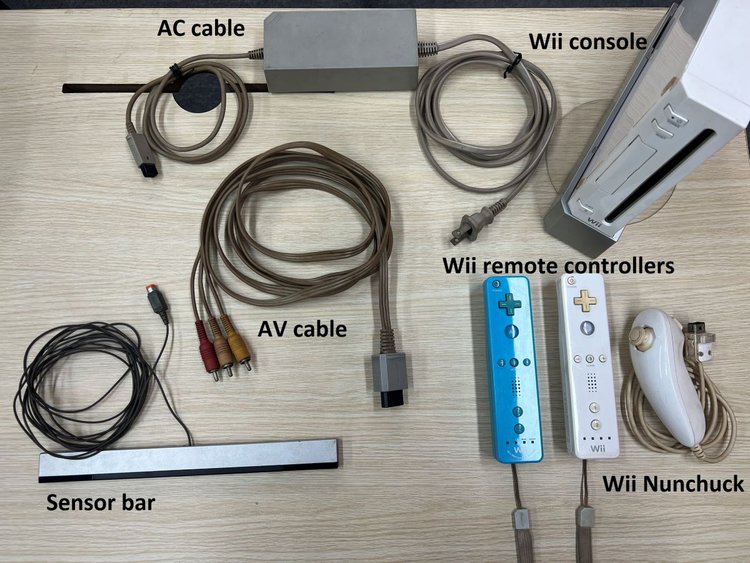
The Wii Shop closed on January 30th, 2019, making it impossible to purchase any additional Wii digital games. Other third-party apps like YouTube, Weather, etc., are also no longer accessible on the Wii, limiting the features that current players can use.
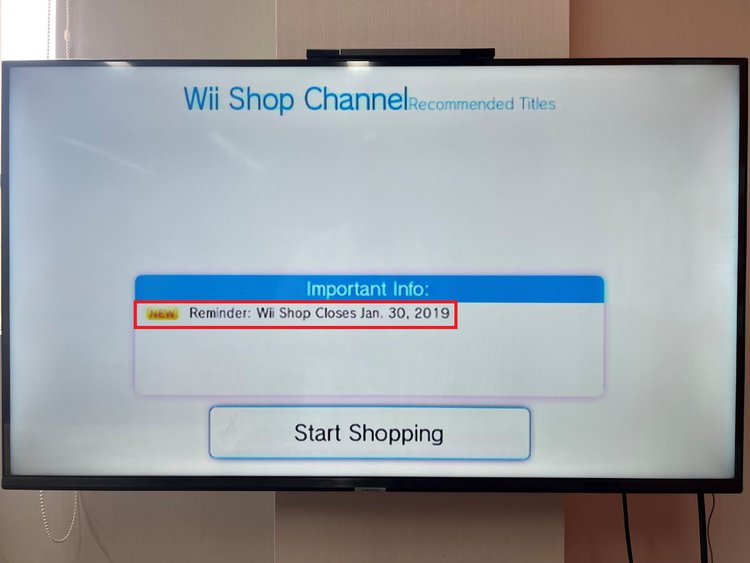
While this means no new Wii games are being produced and made available for purchase, you can still use the disc version of Wii and play any old games released before 2019.
Can You Connect a Wii to a Projector?
Yes, you can connect a Wii console to a projector.
While the Wii was originally designed to be used with a TV, it can also be connected to a projector with the correct hardware.
That said, you may experience a few setbacks that you wouldn’t normally have when using the Wii with a TV.
- Positioning the sensor bar from Wii with the projector setup
- Blocking the projector’s image projection if the projector is set up behind your back
- The Wii can only connect to a projector via an RCA connection
However, with a little finesse, it is completely possible to have an efficient and successful projector setup with your Wii.
How Does the Wii Sensor Bar Work?
Contrary to popular belief, the Wii Sensor Bar does not send information to or interact with the Wii console. Instead, the cable connecting the Sensor Bar to the Wii only provides power to the Sensor Bar’s LEDs, illuminating them.
These LEDs allow the Wii controllers to track where you’re pointing the Wii remote on the screen.
However, if you’ve lost your Wii’s original Sensor Bar, you can replace it with the newer wireless Sensor Bar.
Where Should the Sensor Bar Be?
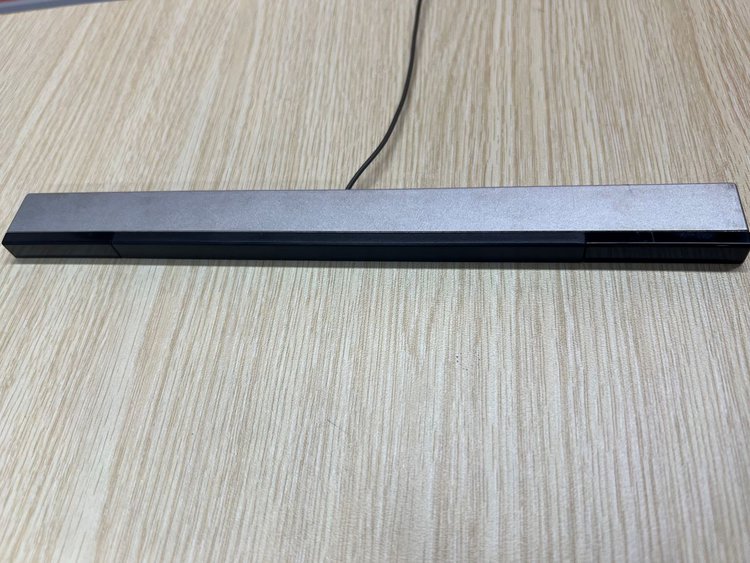
The original Wii Sensor Bar must be connected to the console via a wired connection. So, when connecting your Wii to a projector, you must place the Sensor Bar in front of the projector screen so that you can point your controller at it when playing games.
A few dedicated Wii players also suggest the following tips:
- Tape the Wii Sensor Bar to the bottom of your projector screen. If you’re using a wired Sensor Bar, it’s a good idea to try to position your projector close enough to your screen so you can correctly position the Sensor Bar.
- Use double-sided tape to affix the Wii Sensor Bar to your ceiling. Bear in mind that this tip is probably best avoided if your home has very high ceilings. Instead, you may want to see if there’s a floating shelf or something similar above your projector screen that you can tape the Sensor Bar to.
- If a wired Sensor Bar doesn’t suit your projector setup, consider using a wireless sensor instead. We recommend the SOONORY Replacement Wii Wireless Sensor Bar or the MAY FLASH W010 Wireless Sensor.
Please note that the recommended distance to have between your Wii Remote and Sensor Bar is three to eight feet.
How to Connect a Wii to a Projector?
Since Wii is a relatively older gaming console, it does not have an HDMI port like other modern consoles. So, it’s impossible to connect your Wii system to your projector via an HDMI cable. Instead, you’ll have to use one of these two legacy connections.
- Via HDMI using an adapter to convert RCA to HDMI.
- Via VGA using an adapter to convert RCA to VGA.
Let’s learn how to connect your Wii to a projector!
Via RCA to HDMI Adapter
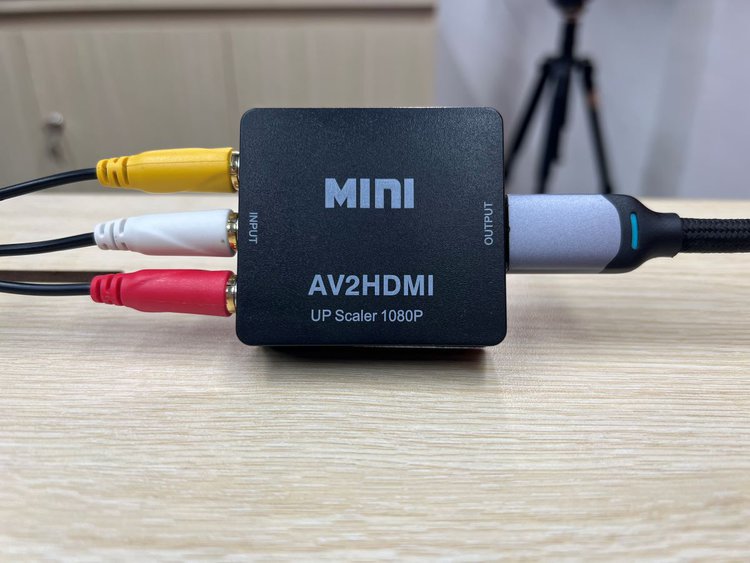
Before following the instructions below to connect your Wii to a projector, ensure both your Wii console and projector and plugged into power.
You will need an RCA to HDMI adapter for this process.
You will find two USB ports on the back of your Wii console. These ports are powered so you can power the adapter by plugging its USB cable into one of them. Alternatively, you can plug the adapter into a wall outlet. The adapter will not work if it’s improperly powered.
Once all of your devices are sufficiently powered, plug one end of your HDMI cable into the projector. Then, connect the other end to the OUTPUT port on your RCA/AC to HDMI connector.
Attach the RCA ends of your Wii cable to your adapter’s RCA ports, paying close attention to the ports’ color-coded rims and making sure they match the cables’ labels. Next, plug the other ends of the RCA cables into your Wii console’s AV output ports.
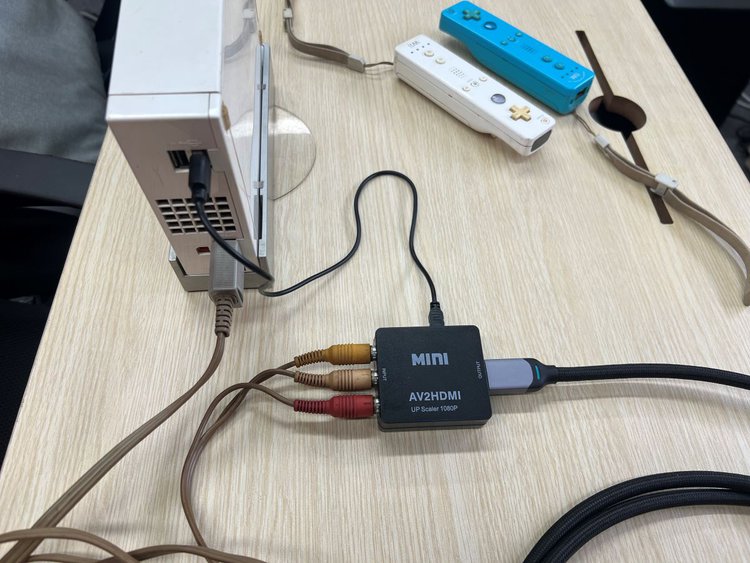
While connecting your Wii to a projector is not different than connecting it to a TV without an HDMI cable, connecting the Sensor Bar is a different story.
If you’re having difficulties connecting the wired sensor bar to your Wii console or getting to work with your setup, it may be best to use a wireless sensor instead.
As suggested by other Wii users, you can try taping the Sensor Bar to the bottom of your projector screen. The Sensor Bar is fairly lightweight, so it shouldn’t weigh down the screen. But if you find that it’s a little too heavy, try attaching it to the wall right below the screen with double-sided tape instead.
Wireless Sensor Bar setups are much more convenient than their wired counterparts and will help you mitigate any placement problems or limitations.
Via RCA to VGA Adapter
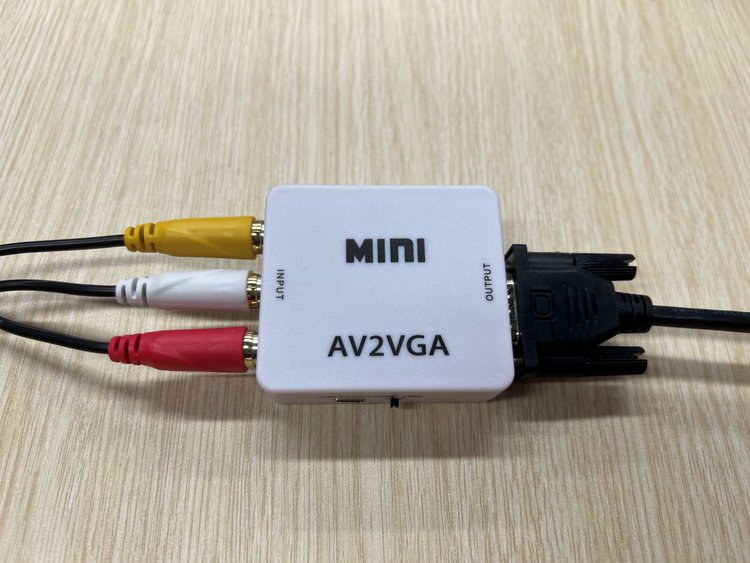
Many TVs have VGA ports, making it incredibly easy to connect your Wii to them using a VGA to HDMI adapter.
Plug your Wii console and projector into wall outlets before powering the VGA to HDMI adapter using your Wii console’s USB port.
Connect the RCA three cables to the adapter’s RCA ports according to color-coded labels. Then, plug the other ends of the RCA cables into the Wii console’s AV output ports.
Next, connect one end of a VGA cable to the adapter, screwing it in place. Then, plug the other end of the cable into your projector’s VGA port.
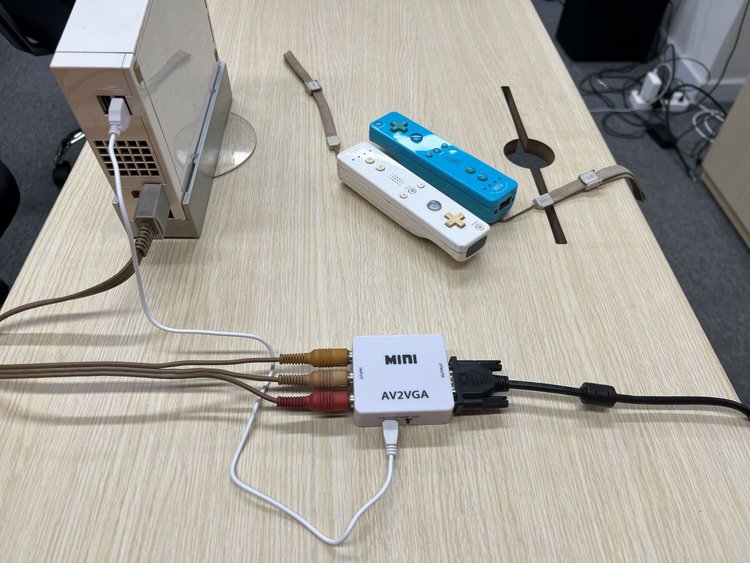
Wrapping Things Up
Wii consoles don’t have HDMI ports, but that doesn’t mean you can’t connect them to your projector. With the right adapter, you too can play all your favorite Wii classics on a big screen from the comfort of your own home.
You can connect your Wii to your projector using either an RCA to HDMI adapter or an RCA to VGA adapter. Remember to power your adapter using one of the Wii console’s USB ports or a wall outlet.
It’s also a good idea to tape the Wii Sensor Bar to the bottom of your projector screen so you can point the controller at the screen just as you would when playing Wii on a TV.
What’s your experience connecting a Wii to a projector? How did you choose to set up your Wii Sensor Bar?
Let us know in the comments below!
Yesenia Achlim is a technical copywriter and editor with a focus on AV equipment. She aims to break down complicated topics and make technology accessible, no matter your technical expertise. When she’s not teaching you how to replace a projector lamp, you can find her reading and baking.

